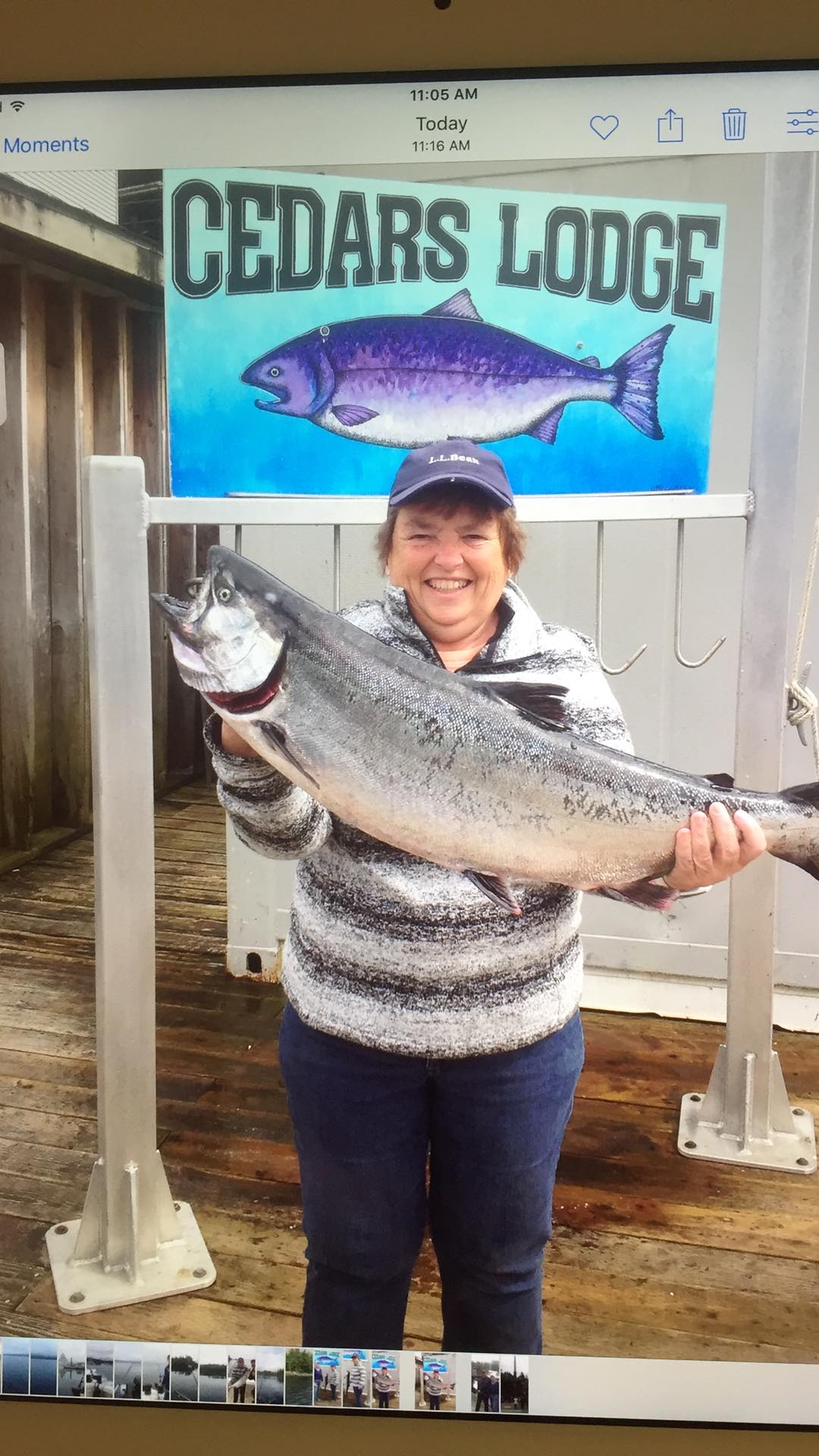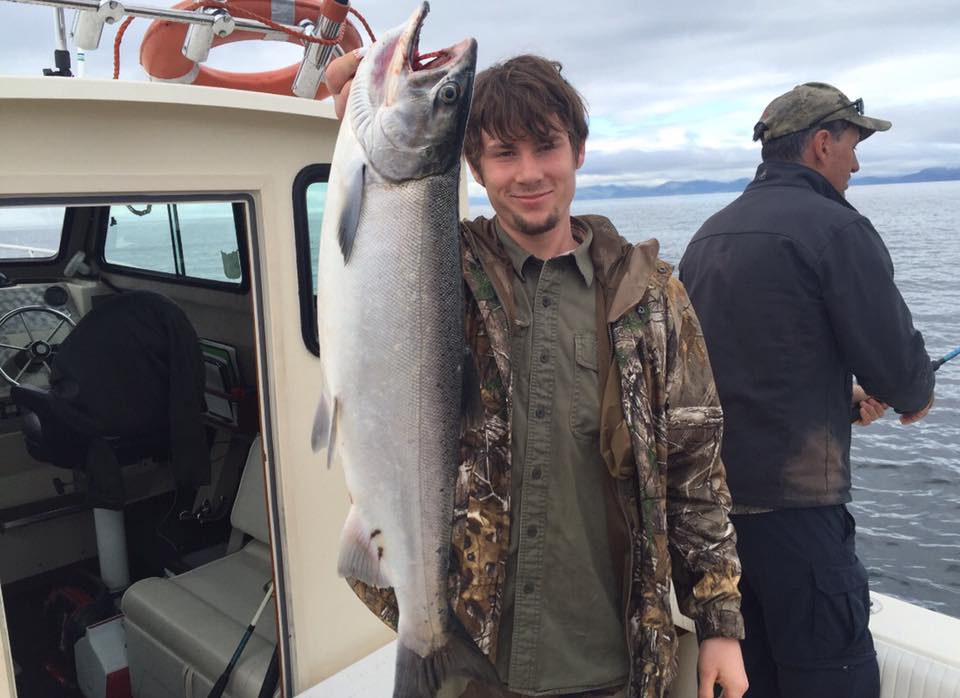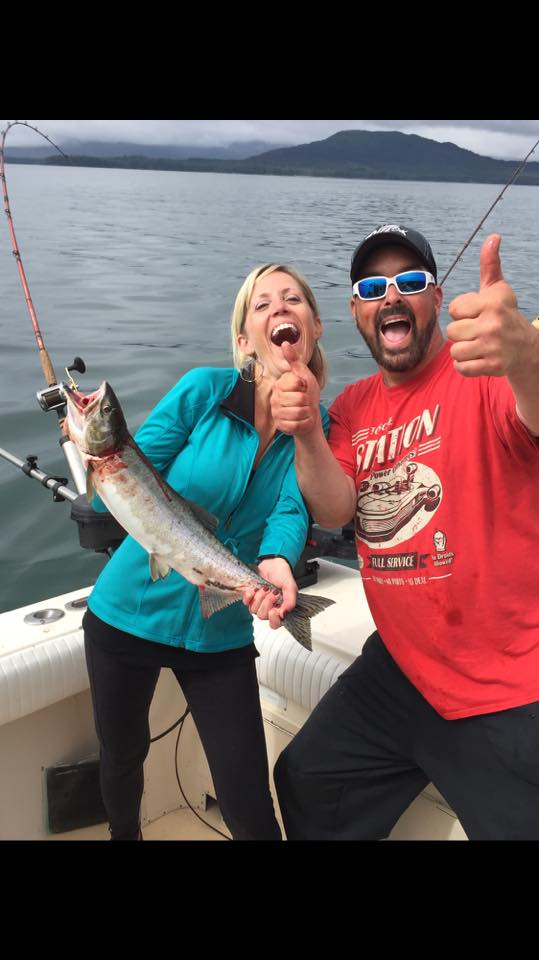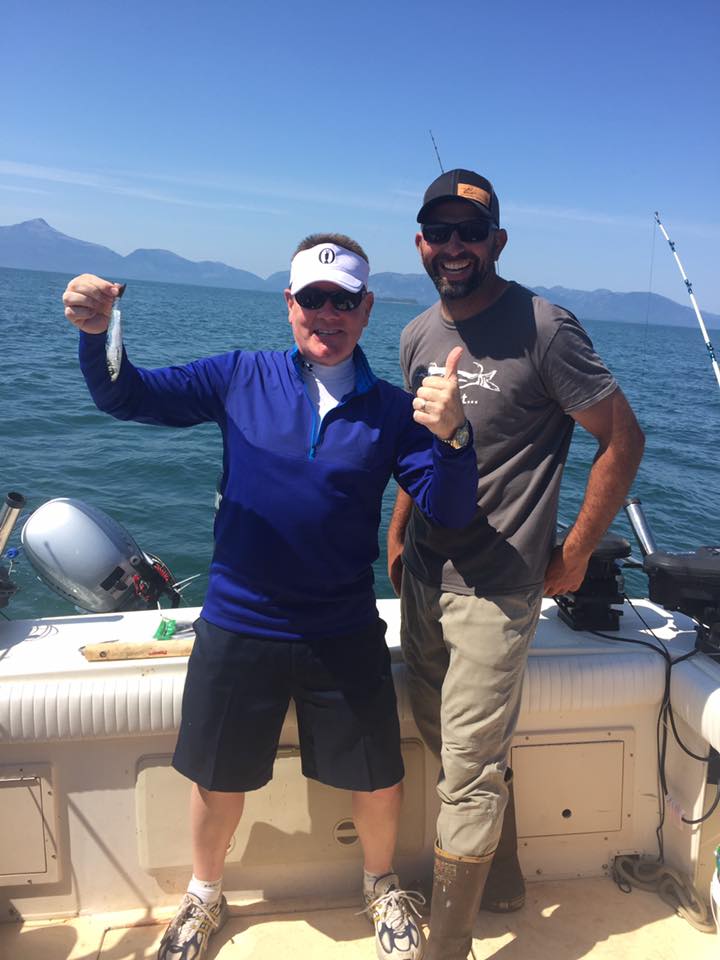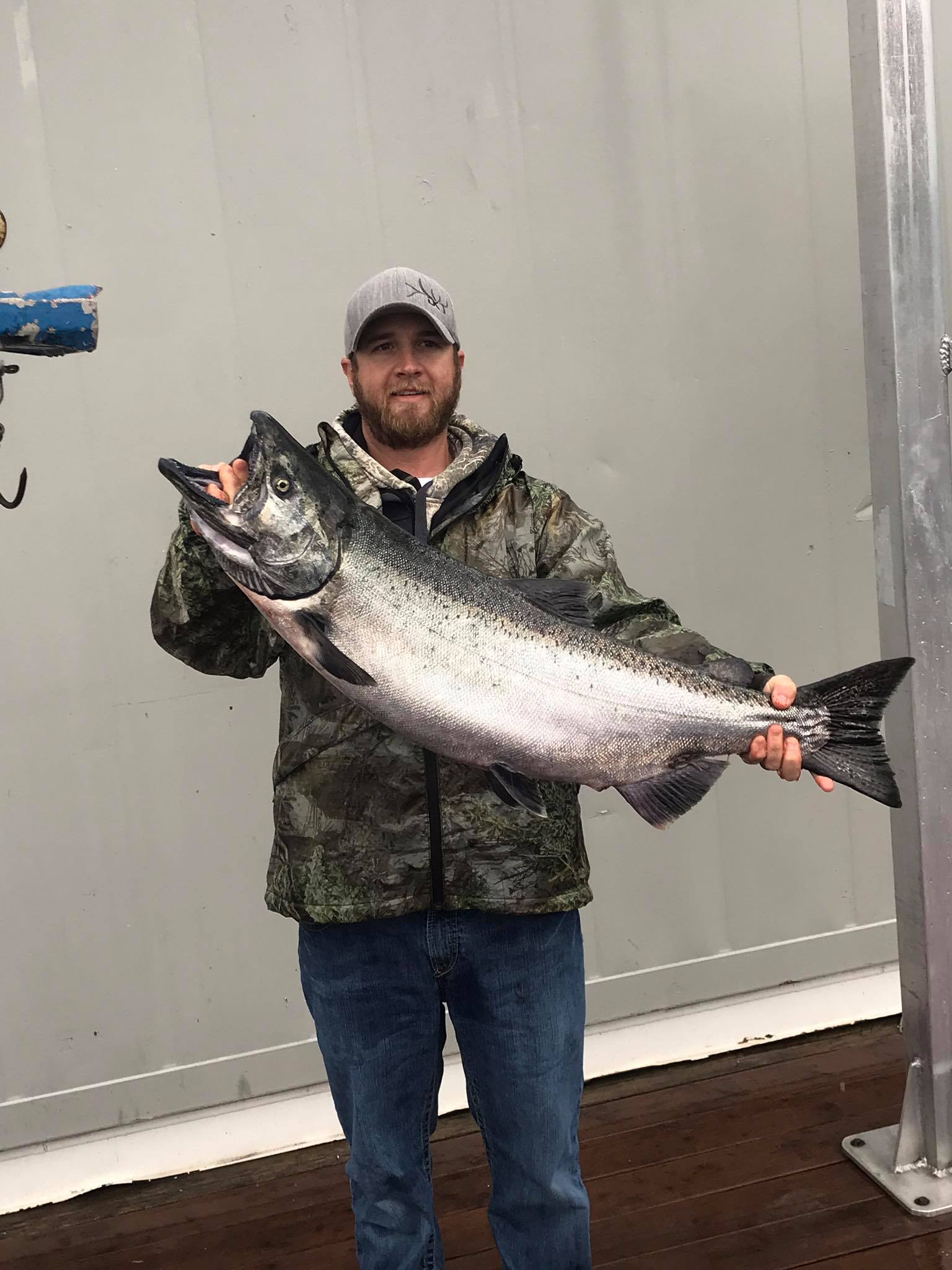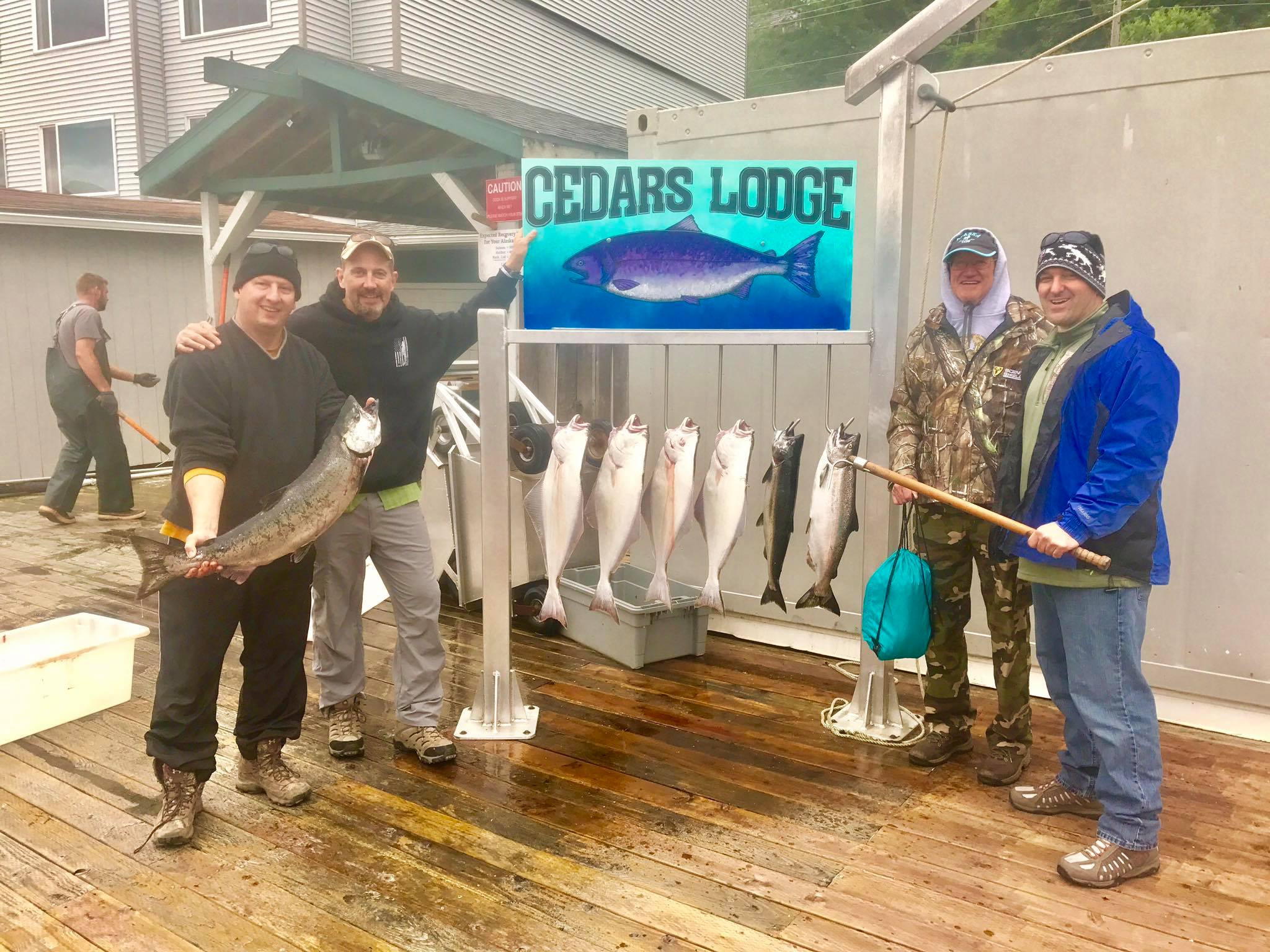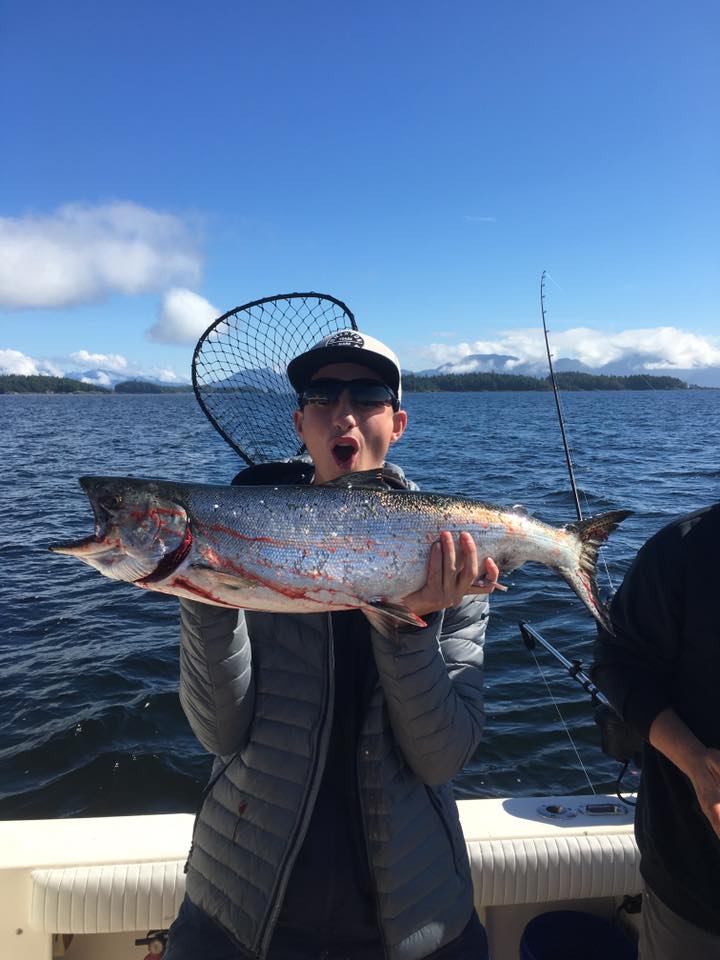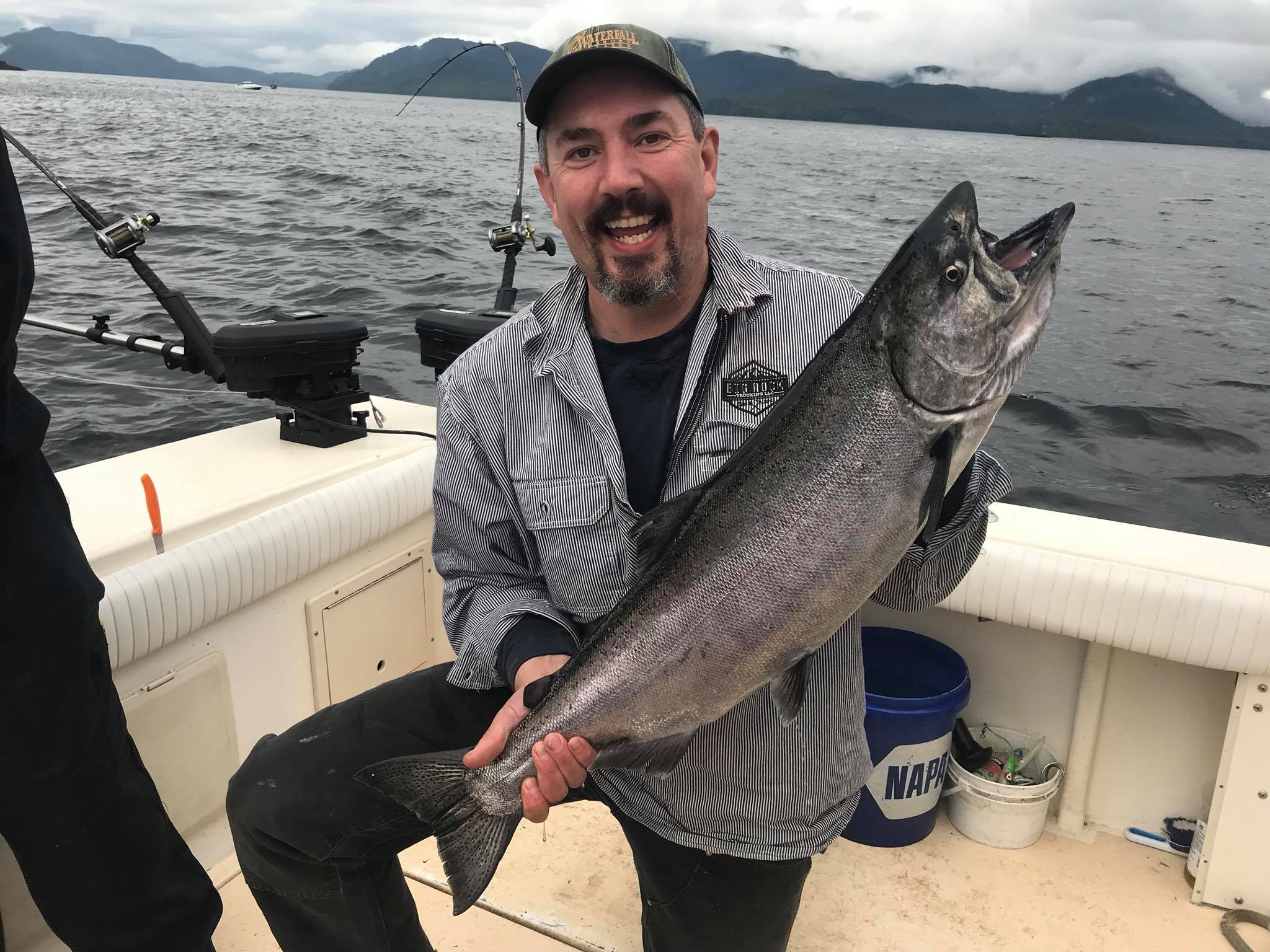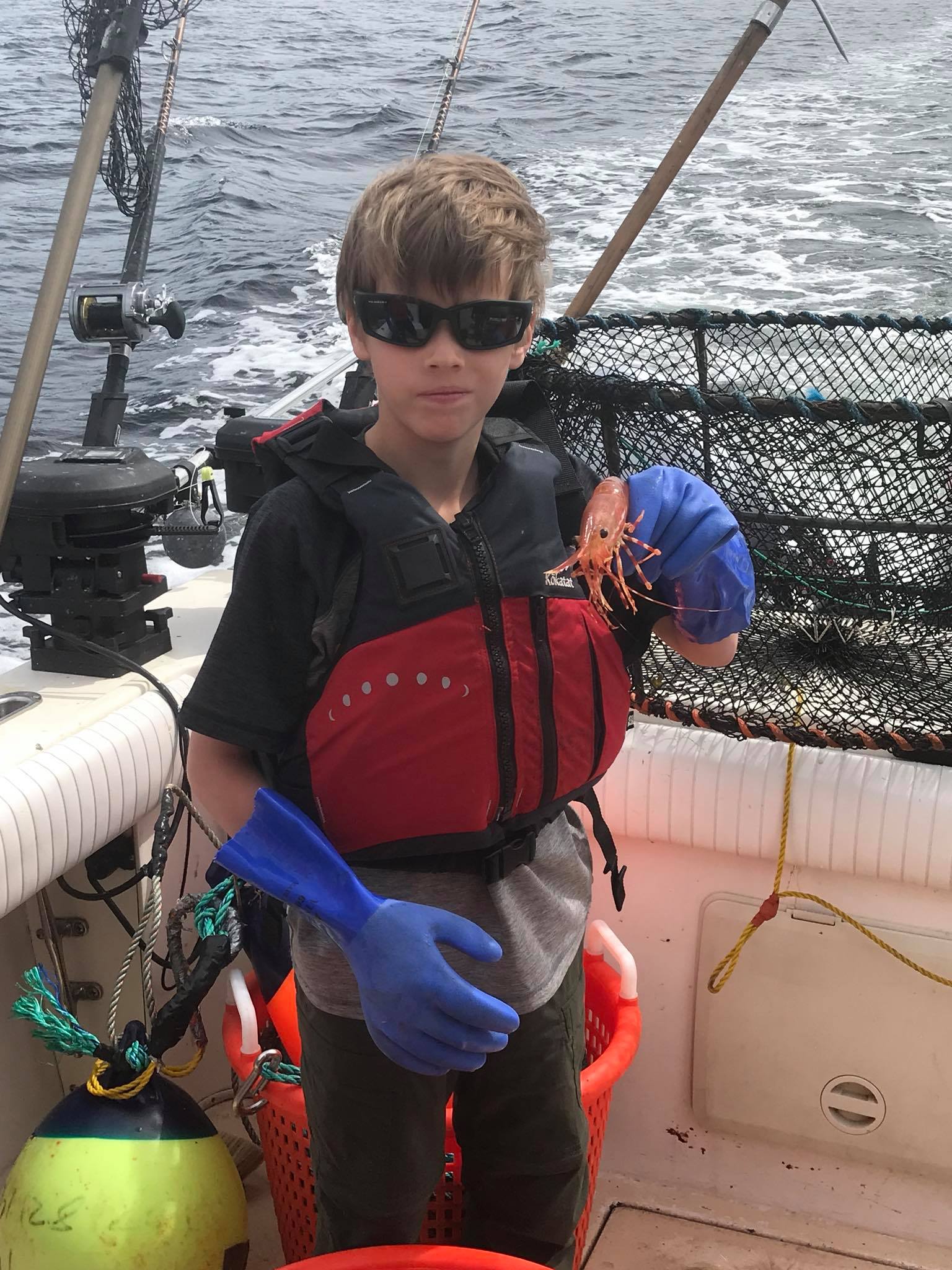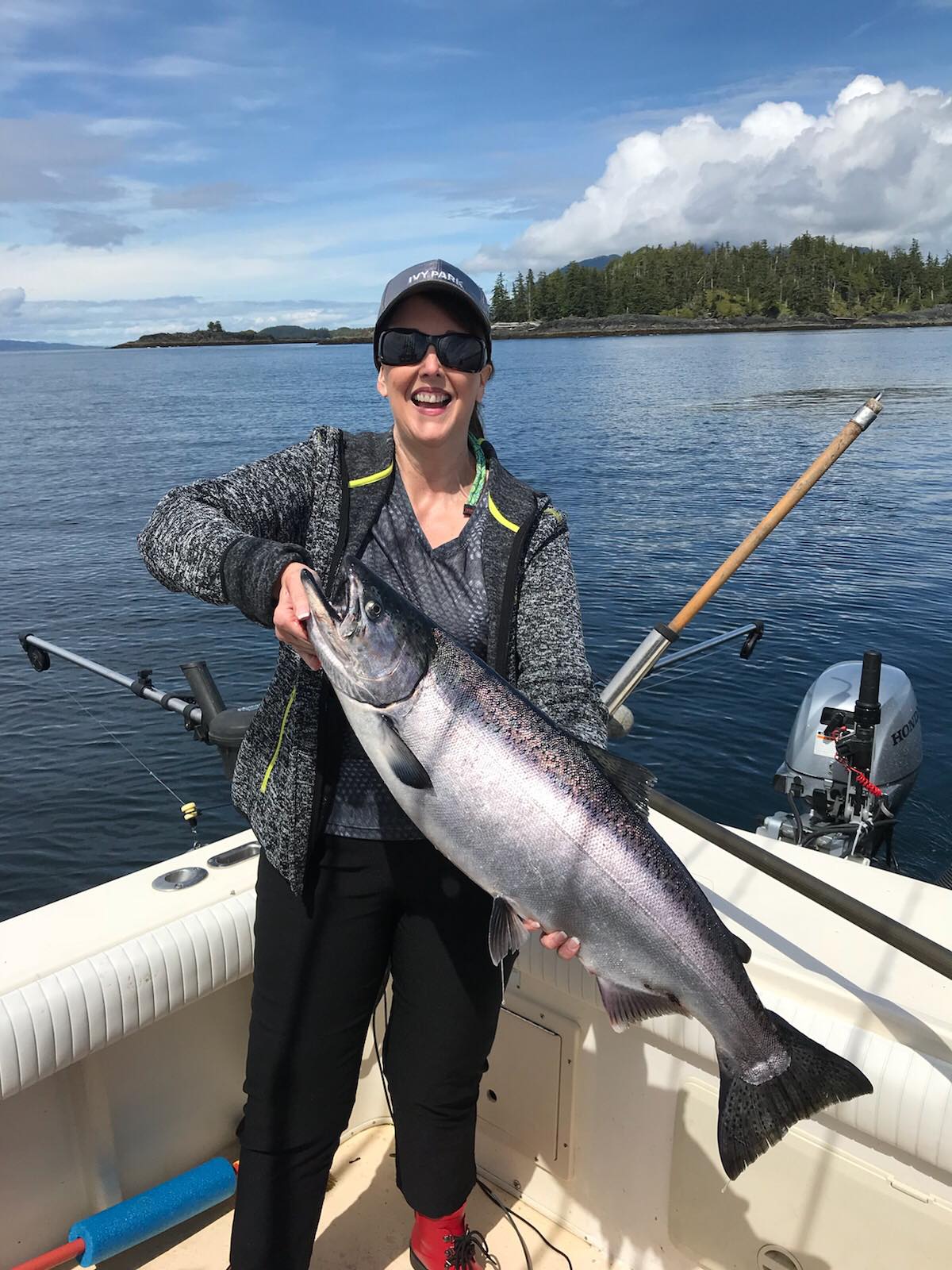Sound Advice
Here are a few tips and tricks about Halibut fishing that I’ve learned over the years. This is by no means an exhaustive list, but you may find a few pointers that will help you out.
Be Patient! Since Halibut are attracted by scent, the longer you have smelly bait on the bottom, the better chance you will draw a halibut in and get a bite. In some of our best halibut holes, it isn’t uncommon to sit for over an hour without a bite before the action begins. Just slow down and try to have fun while your waiting.
Give your bait/lure movement! I cant tell you how many times I have had one person on the boat who drastically out-fished everyone else. Often times, this is the person who is steady with jigging their rod and working their gear up and down on the bottom. When a fish follows the scent trail and ends up looking at 4 or 6 baits on the bottom, often the one that is moving is the one what will get hit.
Don’t wait to long to check your bait! When we are on a good halibut bite you will often get bit within seconds of your bait hitting the bottom. It is really difficult to catch a fish with a bare hook, so if you were getting bites and now you aren’t, CHECK YOUR BAIT! It is better to check it often and confirm that you are good-to-go than to waste valuable time by fishing bait-less (unless your using a jig or other artificial bait, well get into that later).
Listen to your Captain! I cant tell you how many people I have taken fishing over the years that just refuse to listen to my instruction and insist on doing it there own way. The techniques that work for crappe, bass, sunfish, marlin, etc. just don’t work the same in Alaska for our fish! If you already know how to fish and don’t want any help, just RENT a boat and do it yourself. The reason that I/We are successful charter captains is that we know how to catch fish, so listen to us and do what we say.
This may seem gross, but, if a you catch a halibut that pukes up something on your deck such as the baby Skate below – put it on your hook and send it down! They ate it once so it must look good to a halibut. I cannot tell you how many times this has produced fish! (Credit given to Captain Clayton Moore for showing me this trick)
Hold your rod! When the fishing gets slow it is tempting for people to want to put their rod in the rod-holder and walk away. The problem with doing this is that often you will FEEL a bite long before you SEE a bite. The most success you can have halibut fishing will be holding your rod and waiting patiently (unless your captain has instructed you otherwise).
Use a SHARP HOOK! When you are fishing in 200 or 300 feet of water, you need your hook to set good the first time. I have talked with numerous people who have a hard time catching Halibut and this is one common problem. Old, rusty hooks wont work well for most kinds of fishing, but especially bottom fishing in deep water. My philosophy is that if its sharp enough to cut me, then its sharp enough to catch a fish.
Don’t be afraid to let the fish fight. For whatever reason, many halibut anglers get into a big hurry to get there fish up to the boat and lose many halibut in the process. Allowing the fish to fight and playing it for a while has the following benefits: It will tire out the halibut so when it does come to the surface it will be easier to subdue and it allows the angler to have some fun while fishing.
Halibut can be fickle and most days will be either interested in a bait OR an artificial. If you are fishing a spot that you know has fish but aren’t getting bites on bait, switch over to a artificial (my favorites are lead-head jigs with grub tails or crippled herring jigs). Many times when fishing gets slow I will switch one rod off of bait onto a jig and it will usually start getting hits. The opposite of this is true also if they stop hitting jigs then try bait!



